Dr. Socrates

Brief Synopsis
Cast & Crew
William Dieterle
Paul Muni
Ann Dvorak
Barton Maclane
Robert Barrat
John Eldredge
Film Details
Technical Specs

Synopsis
Doctor Lee Caldwell moves to the small town of Big Bend after the death of his fiancée. He is not quickly accepted by the community, which nicknames him Dr. Socrates because of his love of books. His few patients cannot afford to pay him, and his debts mount until his housekeeper, Ma Ganson, runs out of money. Late one night Lee answers a knock on the door. Red Bastion, a local gangster, demands that Lee treat the gunshot wound he received in his latest bank robbery. Lee dresses the wound and agrees not to report it to the police as required, but he refuses payment. Bastion leaves him one hundred dollars anyway, and Ma Ganson uses it to pay their bills. Things start to look up when Ben Suggs, the banker, invites Lee to examine his daughter, whose nervous condition keeps her bedridden. Lee is able to help her simply by talking to her. Slowly he acquires some paying patients. Meanwhile, Bastion picks up hitchhiker Josephine Gray on his way to another bank robbery. Jo escapes from the car when they open fire on the bank and is slightly wounded in the crossfire. Everyone assumes she was one of the gang, but Lee prevents them from taking her to jail. To save her from the crowd, and because he has fallen in love with her, Lee invites her to stay with him until she is fully recovered. When Bastion's wound becomes infected, his men bring Lee to their hideout to treat it. By accident, Lee learns the location of the hideout and hurries to tell the police. Before they attack, Lee begs for time to rescue Jo, who has been kidnapped by Bastion. By pretending to believe that the gangsters have been exposed to typhoid, Lee is able to inject them all with a knockout drug. The gang is captured and Lee is a hero. He now plans to settle in Big Bend with Jo.

Director
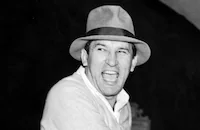
William Dieterle
Cast
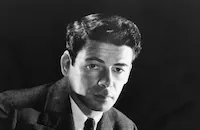
Paul Muni

Ann Dvorak
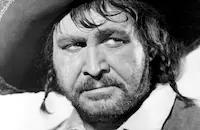
Barton Maclane

Robert Barrat
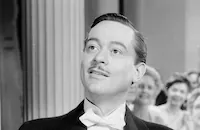
John Eldredge
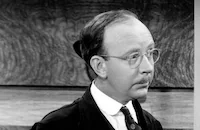
Hobart Cavanaugh
Helen Lowell

Mayo Methot

Henry O'neill

Grace Stafford
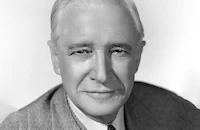
Samuel Hinds

June Travis
Raymond Brown
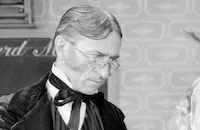
Olin Howland
Joseph Downing
Ralph Remley
Hal K. Dawson
Marc Lawrence
Sam Wren

Edward Mcwade
William Burress
Carl Stockdale
John Kelly
Ivan Miller
Adrian Morris
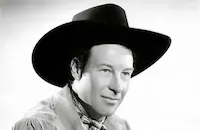
Gordon Elliott
William Wayne
Maidel Turner
Vangie Beilby
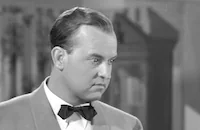
Grady Sutton
James Donlan
Ralph Lewis
Emerson Treacy
June Martel
Jerry Madden
Alfred P. James
Lucille Ward
Dick Elliott
Gene Morgan
Harry Harvey
Jack Gardner
Leo White
Frank Darien
Ben F. Hendricks
Jack Norton
Al K. Hall
Huey White
Robert Perry
James Dundee
Frank Mcglynn Jr.
Larry Mcgrath
Marie Astaire
Lucille Collins
Katherine Sheldon
Crew

Film Details
Technical Specs

Articles
Dr. Socrates
ARMED WITH A DOCTOR'S KIT, HE FACED 1000 KILLERS!
Tag line for Dr. Socrates
Armed with formidable acting skills and a dogged determination to better his career, Paul Muni faced a project he didn't really want to make. It's not that the 1935 crime drama Dr. Socrates was an inferior film. It's just that the actor was ready to move his career in a new direction, and Warner Bros. wouldn't even consider it until he made the film they wanted.
Their thinking wasn't that far off the mark commercially. The story of a small town doctor forced to treat a gangster and his mob had come from W.R. Burnett, whose writing had helped launch the gangster cycle of the early '30s with Little Caesar (1931) and Scarface (1932). The latter had been an early triumph for Muni, but by the mid-'30s, he was ready to move on to new things. In particular, he was fired up about filming a biography of medical pioneer Louis Pasteur. Yet he couldn't get studio executives to approve the project. Hal Wallis only agreed to let Pierre Collings and Sheridan Gibney work on a screenplay for the Pasteur film if Muni would make Dr. Socrates first. And even then, Wallis warned the writers, "I don't think we'll ever do it. Jack Warner is dead set against it."
Muni could at least console himself with the chance to act opposite Ann Dvorak, who had played his sister in Scarface, and a script that had some snappy dialogue. Burnett's story had run as a serial in Collier's magazine earlier in the year, at which time Paramount had bought the screen rights. After getting a story treatment from James M. Cain, they sold the property to Warner Bros. The initial screenplay by producer Robert Lord created such a fully dimensional and even sympathetic portrayal of the gangster, Red Bastian, that some at the studio feared they would run into trouble with the Production Code Administration. In fact, Muni briefly considered playing the role himself at first, before deciding that the small-town doctor would give him a chance to play the exact opposite of Tony Camonte in Scarface. Instead the gangster's role went to Barton MacLane, one of the Warner's second-string heavies, since Muni's presence in the lead meant they didn't need another top box-office name like James Cagney or Edward G. Robinson.
Once Muni started filming, he found more to like about Dr. Socrates. For one thing, the studio had assigned his favorite cameraman, Tony Gaudio, who helped give the picture the same gritty atmosphere he had brought to Little Caesar. For another, he soon bonded with director William Dieterle, a cultured German who, like Muni, was hoping for better things. Under Dieterle's influence the script improved tremendously. One sequence historians have credited to him is a tense lynch-mob sequence. The original script had made the film's small town setting, filled with narrow-minded busybodies who want nothing to do with the big-city doctor, a microcosm of banal evil. Originally, the sheriff was to have questioned Muni about a young hitchhiker (Dvorak) he's harboring who's suspected of being involved with the gangsters. At Dieterle's suggestion, the sheriff was accompanied by an angry mob fired up by gossip about the woman. Muni loved the social commentary this added to the film. He and Dieterle would end up working together on three of his most prestigious Warner Bros. films, The Story of Louis Pasteur (1936), The Life of Emile Zola (1937) and Juarez (1939).
One aspect of Dieterle's working methods to which Muni had to adjust was his almost fanatical faith in astrology. Relying on his wife's skill at reading the stars, Dieterle decreed that shooting start at 9:02 a.m. on June 6, 1935. He also scheduled work so that they would finish the last shot at 5:20 p.m. on July 15, which Mrs. Dieterle decreed a lucky day for both director and star.
Beyond the meeting of the future collaborators, Dr. Socrates was insignificant in most regards but at least it received respectful reviews. Although most critics agreed with Andre Sennwald of the New York Times that it was "a bit of minor league melodrama," at least they didn't outright pan the film. It was just at this point in Muni's career they expected more from him as he did himself. In later years, he would rarely even bother to list the film in his credits. For Warner Bros. though, Dr. Socrates proved a profit-maker and to make the most of their investment, they remade it twice. In 1939, Humphrey Bogart took on the gangster's role in King of the Underworld, with Kay Francis as the small-town doctor. Three years later, the story -- not to mention much of the original's footage -- returned in Bullet Scars, with Regis Toomey as the doctor and Howard da Silva as the mob chieftain.
Producer: Robert Lord
Director: William Dieterle
Screenplay: Robert Lord, Mary McCall, Jr.
Based on the story by W.R. Burnett
Cinematography: Tony Gaudio
Art Direction: Anton Grot
Music: Leo F. Forbstein
Principle Cast: Paul Muni (Dr. Lee Caldwell), Ann Dvorak (Josephine Gray), Barton MacLane (Red Bastion), Robert Barrat (Dr. Ginder), John Eldredge (Dr. Burton), Hobart Cavanaugh (Floyd Stevens), Mayo Methot (Muggy), Henry O'Neill (Greer), Samuel Hinds (Dr. McClintock), Olin Howland (Catlett), Grady Sutton (Grocery Clerk).
BW-70m. Closed Captioning.
by Frank Miller
Sources:
Hal Wallis, quoted by Jerome Lawrence in Actor: The Life and Times of Paul Muni)

Dr. Socrates
Marc Lawrence (1910-2005)
Born Max Goldsmith on February 17, 1910, in the Bronx, Lawrence had his heart set on a career in drama right out of high school. He enrolled at City College of New York to study theatre, and in 1930, he worked under famed stage actress Eva Le Gallienne. Anxious for a career in movies, Lawrence moved to Hollywood in 1932 and found work immediately as a contract player with Warner Bros. (an ideal studio for the actor since they specialized in crime dramas). He was cast as a heavy in his first film, If I Had a Million (1932). Although his first few parts were uncredited, Lawrence's roles grew more prominent: a sinister henchman in the Paul Muni vehicle in Dr. Socrates (1935); a conniving convict aiding Pat O'Brien in San Quentin (1937); a menacing thug stalking Dorothy Lamour in Johnny Apollo (1940); the shrewdly observant chauffeur in Alan Ladd's breakthrough hit This Gun For Hire (1942); and one of his most memorable roles as Ziggy, a fedora wearing mobster in the Bogart-Bacall noir classic Key Largo (1948).
Lawrence, when given the opportunity, could play against type: as the prosecuting attorney challenging Tyrone Power in Brigham Young (1940); a noble aristocrat in the Greer Garson-Walter Pidgeon period opus Blossoms in the Dust; and most impressively, as a deaf mute simpleton in the rustic drama The Shepherd of the Hills (both 1941). Better still was Lawrence's skill at comedy, where his deadpan toughness worked terrifically as a straight man against the likes of Joe E. Brown in Beware Spooks (1939); Abbott and Costello in Hit the Ice (1943); Penny Singleton in Life with Blondie (1945); and Bob Hope in My Favorite Spy (1951).
After that, Lawrence's career took a turn downward spin when he was labeled a communist sympathizer during the Hollywood witch hunts of the early '50s. He was exiled in Europe for a spell (1951-59), and when he came back, the film industry turned a blind eye to him, but television overcompensated for that. Here he played effective villains (what else?) in a series of crime caper programs: Peter Gunn, Johnny Staccato, The Untouchables, Richard Diamond, Private Detective; and eventually made a welcome return to the big screen as a returning exiled gangster in William Asher's underrated mob thriller Johnny Cool (1963).
It wasn't long before Lawrence found himself back in the fray playing in some big box-office hits over the next two decades: Diamonds Are Forever (1971), The Man with the Golden Gun (1974), Marathon Man (1976), Foul Play (1978); and The Big Easy (1987). Sure he was cast as a gangster, but nobody could play a rough and tumble mob boss with more style or conviction.
Interestingly, one of his finest performances in recent years was in television, as a severely ill old man unwilling to accept his fate in a fourth season episode of ER (1997-98). His last screen role was just two years ago, as a nimble minded VP in Looney Tunes: Back in Action (2003).
In 1991, Lawrence published a memoir about his venerable career, Long Time No See: Confessions of a Hollywood Gangster that received much critical acclaim. He has also developed a cult following due to his appearances in such offbeat items as From Dusk to Dawn and Pigs aka Daddy's Deadly Darling, the 1972 horror film he directed and starred in with his daughter Toni. He is survived by his wife, Alicia; two children from a previous marriage, Toni and Michael; and a stepdaughter Marina.
by Michael T. Toole
Marc Lawrence (1910-2005)
Quotes
Trivia
Notes
According to January 22, 1935 news item in Hollywood Reporter, James M. Cain was signed by Paramount to write the screenplay of Dr. Socrates. It has not been determined when the property was transferred from Paramount to Warner Bros. Cain's contribution to the finished film has also not been determined. Motion Picture Herald notes that this film reunited writer W. R. Burnett and Paul Muni and Ann Dvorak from the 1932 film Scarface. The 1939 Warner Bros. film King of the Underworld was based on the same story (see below). The 1942 film Bullet Scars, directed by D. Ross Lederman and starring Regis Toomey and Adele Longmire, had a similar story and, according to modern sources, used footage from Dr. Socrates.















